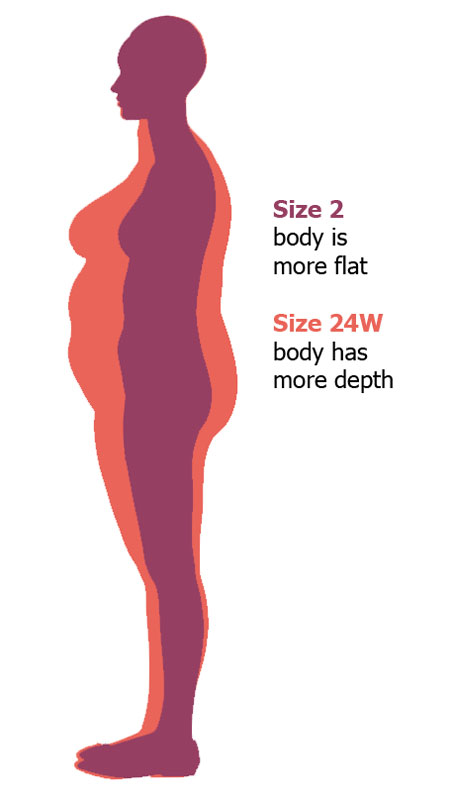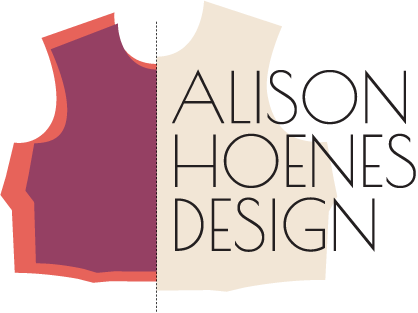Whether you are in the fashion industry or not, it seems like the assumption is that plus sizes are harder to fit. Plus size clothing, in general, fits more poorly than straight size collections and brands seem almost scared to dip their toes into more inclusive sizing. But is it actually true that plus sizes are harder to fit or has our society spent so much of its attention dressing thin people that it has made us wary of dressing larger bodies?
I see some truth in both sides. Yes, larger sizes can be more difficult to fit, but I think some of this difficulty is caused by an imbalanced understanding of fit and design. On the whole, the industry has trained our design and technical fit minds to think small. Achieving great fit across a broad range of sizes is going to require a reshaping of our design and fitting approach. It is time to think big. Doing so, I think, will make us better designers.

As a designer, you learn how to turn flat yards of fabric into garments that fit three-dimensional bodies. Learning to fit small sizes (I personally learned to fit on the equivalent of size 2 dress forms at university) is the easy way. While still in three-dimensions, smaller bodies are more flat than larger ones. This means there is less involved in making that flat fabric fit. Larger sized bodies, however, have much more depth to them. Getting that flat fabric to fit a more round shape takes more skill and attention – both on the technical fit and pattern side and on the design side.
Think about a basic tee-shirt. With the exception of the armhole (in some cases), the garment itself is almost entirely flat. It consists of a flat front piece, flat back piece, and two sleeves. Pretty easy. If you try this basic tee on a size 2 person, it probably looks pretty good. The hem is fairly parallel to the floor, the armholes lay pretty flat to the body, and there aren’t large folds or drag lines anywhere.
Now try a basic tee shirt on a size 2XL. You’ll probably notice that the front hem now rides up while there is excess fabric at the back waist. There will be drag lines from a gappy front armhole to the bust and then from the bust down diagonally towards the side waist. This is because the flat tee shirt doesn’t account for the roundness of the body depth or a larger bust size. With basic styles like a tee shirt, this is often just how it is. The design is intentionally relaxed and more slouchy, so the designer doesn’t mind the look. The problem is when this same approach is translated to garments that are supposed to be more tailored or fitted.

Fitting larger sizes requires more shaping. On the design side, that means there needs to be darts, style lines, or a seam present in order to create the shape – it can’t stay flat. In small sizes, you can get a fairly good fit without any of these design details because of the flatness of the body, but on larger sizes they are needed. This is why I don’t recommend making fit decisions based on small sizes. If you are only looking at your design on small sizes, you miss the opportunity to be creative with your design and control how the fit is achieved. Fitting the size in the middle of your size range is ideal, but if you have to choose a different size as your fit model, go bigger. Doing so will show you where shaping is needed and challenge you to design with this in mind! It is much easier to make a design more flat for smaller sizes than it is to fit larger sizes without any design details to absorb the shaping.
While larger sizes do take more attention to fit, I don’t think they are as hard to fit as they are made out to be. If you begin to think bigger and design with a fuller shape in mind, getting a good fit across your whole size range becomes much easier.
